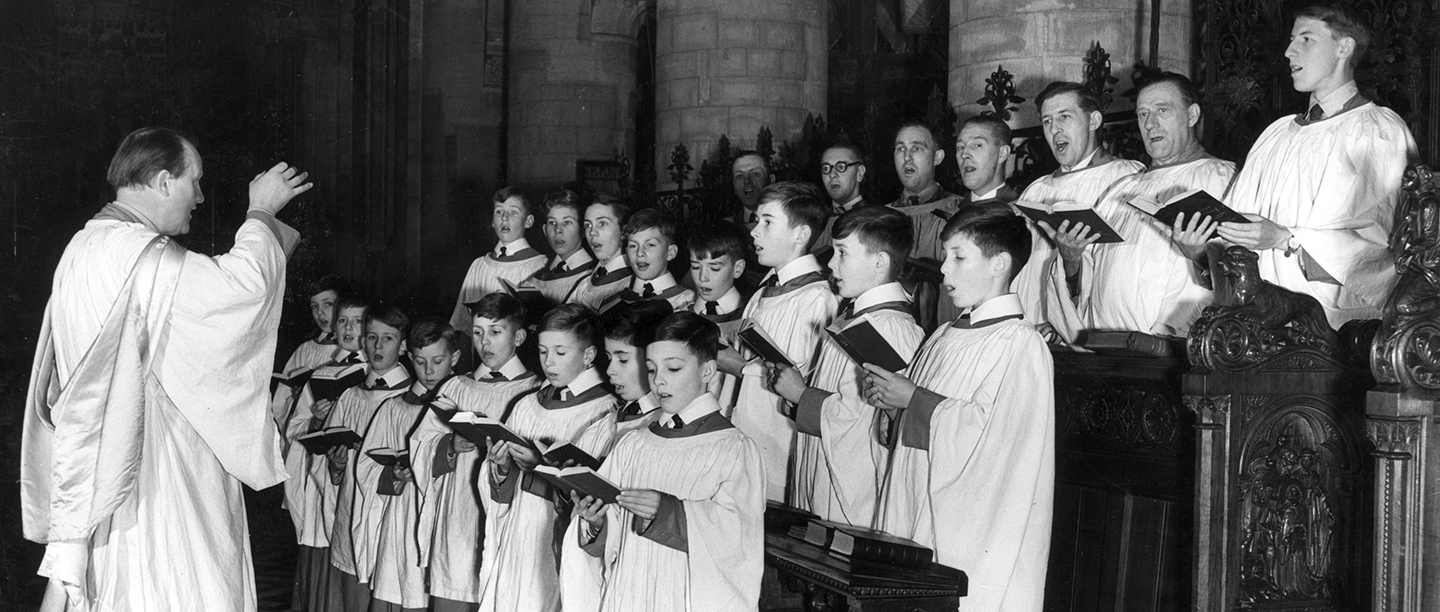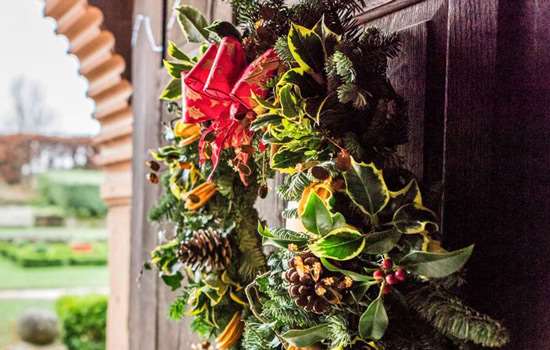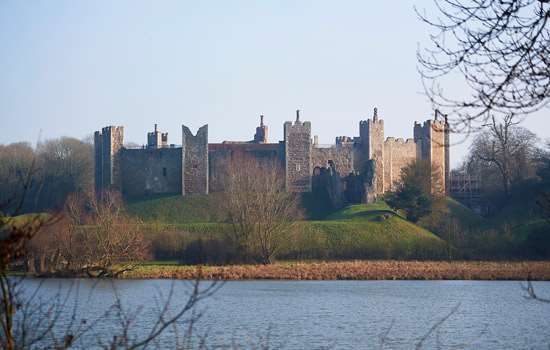If you’ve ever wondered when Christmas carols first came about, the answer lies in the 14th century – although their evolution dates back even further. Even before Christianity, it is thought that midwinter songs existed to keep up people’s spirits, along with dances, plays and feasts.
Christianity spread across Europe from the fourth to the 14th centuries, and the first carols were produced by Franciscan friars (pictured here in the 1940s), who were followers of Saint Francis of Assisi. These took the form of a dance in a circle with linked hands and everybody singing the song. Huge numbers of Christmas carols survive from the 15th century, making it the best-preserved aspect of English medieval music.
Professor Ronald Hutton believes that the dances associated with early carols died out as ‘people just got bored with it’. For a period, carols could be attached to any season, so there were May carols and harvest carols. But Hutton says that, as Christmas is the time for festivity, Christmas carols survived where carols linked to other parts of the year died out.
England’s oldest surviving carol, says Hutton, depends on how you define it. ‘If you go for the component parts, I think it’s “While Shepherds Watched Their Flocks By Night”, which has a 16th-century tune and 17th-century words. On the other hand, they’re not put together securely until the 19th century. So if you’re going for the oldest carol that’s still popular, which is complete, it’s probably “O Come All Ye Faithful”, both the tune and the words of which seem to be securely put together by the end of the 18th century.’
“‘Away in a manger’ was written by an American in the late 19th century who chose to conceal her or his identity”
Not every well-known carol has English roots. In particular, ‘Away in a Manger’ first appeared in a number of American magazines in the 1880s. Intriguingly, the anonymous donor who sent it to them claimed it was a 16th-century German lullaby – but Hutton is not convinced.
‘The anonymous donor credited it to Martin Luther (pictured), the great German reformer,’ he says. ‘Experts in Luther are convinced this cannot be possible. So it’s almost certainly a fake in that sense, written by clearly quite a brilliant American in the late 19th century who chose to conceal her or his identity. It is the tenderest of all our carols. And it was called “Luther’s Cradle Song” for decades, when people were still believing in the original story.’
Listen to our podcast on how Queen Victoria celebrated Christmas at Osborne.
Another carol that has gone through various iterations over the years is ‘Hark the Herald Angels Sing’. The lyric was originally written by Charles Wesley (1707–88) who, with his brother John, founded the Christian denomination of Methodism.
‘The original first two lines are, “Hark how all the welkin rings, Glorious the king of kings.” And quite obviously, this is pretty obscure,’ says Hutton. ‘Even in the early 18th century, “welkin” was a rather old-fashioned way of saying heaven or sky. And so quietly and tactfully, the Methodist preacher George Whitefield tidied the thing up and, in 1754, [added] the two opening lines that have remained ever since.’
However, the carol didn’t get the tune we know today until the composer Felix Mendelssohn (pictured) wrote it in 1840. More recently, a descant (an independent treble melody sung above the main tune) was added in the 1960s.
But the carol with the most complicated history is ‘O Come All Ye Faithful’. It can be traced back to a Latin version, ‘Adeste Fideles’, which is known to have existed as far back as 1640 – and may go back even further. According to Hutton, there are a whole range of candidates to whom the lyrics could be attributed.
‘The most exciting is the musical king of Portugal in the mid-17th century, John IV. But there’s also a whole range of Cistercian monks and English composers who might have been the authors. We just don’t know.’ Further complicating matters is that the standard version we now use was put together by John Francis Wade (1711–86), a Jacobite.
‘He was a supporter of the exiled Stuart royal family,’ says Hutton. ‘And a lot of people have thought there’s a subversive, hidden message in the lyrics, rallying support for Bonnie Prince Charlie and his family. There’s no absolute proof. It’s there if you want to see it. It’s a conspiracy theory – and sometimes those are correct.’
Whatever the true meaning of the words, Hutton maintains that the song remains so well-liked because the lyrics and the tune we know today ‘are just so jolly’. It’s also the song that carol services normally end with ‘because you go out with a bang with “O Come All Ye Faithful”. It’s been translated into lots of languages. It is so compellingly convivial that it can reach all parts of the human race and all denominations.’
And that perhaps explains the enduring popularity of carols. Whether they were created by Franciscan friars in the 14th century or a mysterious American in the late 19th century, they are so inextricably festive that they still capture our collective imagination today – a heartening, seasonal link between past and present.
LISTEN NOW: THE ORIGINS OF CHRISTMAS CAROLS
We’ve come over all festive as we take a break from the studio to reveal the history of carolling with English Heritage Trustee Ronald Hutton and bring you an exclusive carol concert from Bolsover Castle in Derbyshire in time for the big day! Get in the Christmas spirit with The Chesterfield Philharmonic Choir as they sing a selection of festive favourites and discover the story behind each of them.



